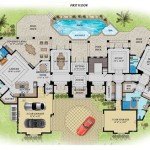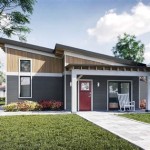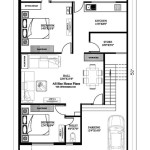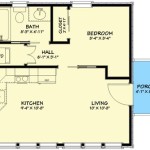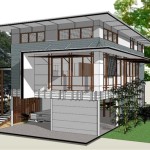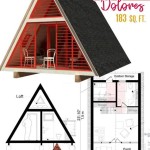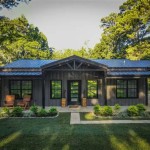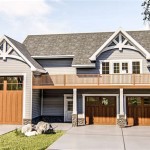Floor Plan Considerations for a Handicap-Accessible Bathroom
Creating a bathroom that is truly accessible for individuals with disabilities requires careful planning and adherence to specific guidelines. A well-designed floor plan is the cornerstone of a functional and safe handicap bathroom. It not only enhances usability but also promotes independence for users with mobility limitations. This article outlines key considerations and provides guidance for developing effective floor plans for handicap-accessible bathrooms.
Understanding Accessibility Standards and Regulations
Before embarking on any bathroom renovation or construction project aimed at accessibility, a thorough understanding of relevant standards and regulations is paramount. In the United States, the Americans with Disabilities Act (ADA) provides specific guidelines for accessible design, including bathroom layouts. These guidelines address dimensions, clearances, grab bar placement, and other critical features. While the ADA primarily applies to public accommodations and commercial facilities, its principles are often applied to residential settings to ensure optimal accessibility.
Local building codes may also contain accessibility requirements that are more stringent than the ADA. It is essential to consult with local building officials or qualified architects and contractors to ensure compliance with all applicable regulations. Failure to adhere to these standards can result in costly rework and, more importantly, compromise the safety and usability of the bathroom for individuals with disabilities.
Furthermore, understanding the specific needs of the intended user is crucial. While ADA guidelines provide a general framework, the individual's specific mobility limitations, reach ranges, and personal preferences should be taken into account. Consulting with occupational therapists or disability specialists can provide valuable insights into creating a bathroom that meets the user's unique requirements.
Key Elements of an Accessible Bathroom Floor Plan
An accessible bathroom floor plan should prioritize ease of movement and functionality for individuals with disabilities. This involves careful consideration of several key elements, including clearances, fixture placement, and grab bar installation.
Clearances: Adequate clear floor space is fundamental for maneuvering wheelchairs, walkers, or other mobility devices. The ADA requires a turning space of at least 60 inches in diameter or a T-turn within the bathroom. Clear floor space of at least 30 inches by 48 inches must be provided at each fixture (toilet, sink, shower) to allow for a forward or parallel approach.
Toilet Placement: The toilet should be positioned to allow for a side transfer from a wheelchair. ADA guidelines specify a clear space of at least 36 inches from the centerline of the toilet to the side wall. The toilet seat height should be between 17 and 19 inches from the floor to facilitate easier transfers. A rear grab bar and a side grab bar are essential for providing support and stability.
Sink and Vanity: Accessible sinks and vanities should have a knee clearance of at least 27 inches high, 30 inches wide, and 17 inches deep. The front edge of the sink should be no more than 34 inches above the floor. Faucets should be lever-operated or touchless for ease of use. Insulating the drainpipes under the sink is important to prevent burns from hot water.
Shower or Bathtub: Accessible showers can be either roll-in or transfer showers. Roll-in showers require a minimum size of 30 inches by 60 inches and a curb height of no more than 1/2 inch. Transfer showers typically have a seat and require a minimum size of 36 inches by 36 inches. A handheld showerhead with a flexible hose is essential for both types of showers. Bathtubs, if used, should have a seat and grab bars to facilitate safe entry and exit.
Doorways: Doorways should have a minimum clear opening width of 32 inches to accommodate wheelchairs. Lever-style door handles are easier to operate than knobs. Consider using a pocket door or a swing-clear hinge for maximum space efficiency.
Lighting: Adequate lighting is crucial for safety and visibility. Provide both ambient and task lighting. Consider installing motion-sensor lights for convenience.
Optimizing Space and Layout
Maximizing space is often a challenge in bathroom design, especially when incorporating accessibility features. Careful planning and strategic layout are essential for creating a functional and comfortable bathroom.
Prioritize Clearances: The first step is to ensure that all required clearances are met. This may involve relocating fixtures or reconfiguring the layout to create sufficient maneuvering space.
Utilize Wall-Mounted Fixtures: Wall-mounted sinks and toilets can free up floor space and make cleaning easier. Ensure that the wall is adequately reinforced to support these fixtures.
Consider a Wet Room Concept: A wet room, where the entire bathroom floor is sloped towards a drain, can eliminate the need for a shower curb and create a barrier-free environment. This design requires careful waterproofing and drainage planning.
Optimize Storage: Install accessible storage solutions, such as pull-down shelves or roll-out drawers, to make items easily reachable. Consider the height of storage units to ensure that they are within the user's reach range.
Choose Appropriate Finishes: Select non-slip flooring materials to minimize the risk of falls. Avoid using small, intricate tiles that can be difficult to clean and may pose a tripping hazard. Use contrasting colors to improve visibility and depth perception for individuals with visual impairments.
Fixture Selection: Selecting the right fixtures is crucial in ensuring both functionality and aesthetics. Look for fixtures that are specifically designed for accessibility, such as comfort-height toilets, lever-handled faucets, and adjustable showerheads. Ensure that the chosen fixtures comply with all relevant accessibility standards and regulations.
Collaboration and Consultation: Working closely with an architect, contractor, and occupational therapist is highly recommended. These professionals can provide valuable insights and guidance throughout the design and construction process. They can help ensure that the bathroom meets the specific needs of the user and complies with all applicable regulations. A collaborative approach can also help identify potential challenges and develop creative solutions to maximize space and functionality.
Future Considerations: When designing an accessible bathroom, it is important to consider the potential future needs of the user. Designing for flexibility and adaptability can help ensure that the bathroom remains functional and accessible as the user's needs change over time. This may involve incorporating features such as adjustable-height sinks and grab bars, or planning for the potential future installation of a ceiling lift.
Additional Tips for an Accessible Bathroom Floor Plan:
- Ensure adequate lighting, especially around the toilet and shower area.
- Install grab bars in contrasting colors for better visibility.
- Use lever-style door handles and faucets for ease of operation.
- Consider installing a comfort-height toilet for easier transfers.
- Provide a clear turning radius for wheelchairs.
By carefully considering these elements and working collaboratively with professionals, it is possible to create a bathroom that is not only accessible but also comfortable, functional, and aesthetically pleasing. A well-designed accessible bathroom can significantly improve the quality of life for individuals with disabilities, promoting independence and enhancing their overall well-being. The focus should always be on creating a space that is both safe and user-friendly, empowering individuals to maintain their independence and dignity.

Handicap Bathroom Remodeling Age In Place Design
Ada Accessible Single User Toilet Room Layout And Requirements Rethink Access Registered Accessibility Specialist Tdlr Ras

Designing Accessible And Stylish Handicap Bathroom Layouts

Wheelchair Accessible Bathroom Layout

Design Accessible Bathrooms For All With This Ada Restroom Guide Archdaily

Accessible Bathroom Design

Handicap Access Bathroom Design Floor Plans

Before After An Accessible Master Bathroom Is Created Using Universal Design Principles Designed
Ada Restroom In Older Building Questions River Daves Place

Before After An Accessible Master Bathroom Is Created Using Universal Design Principles Designed

